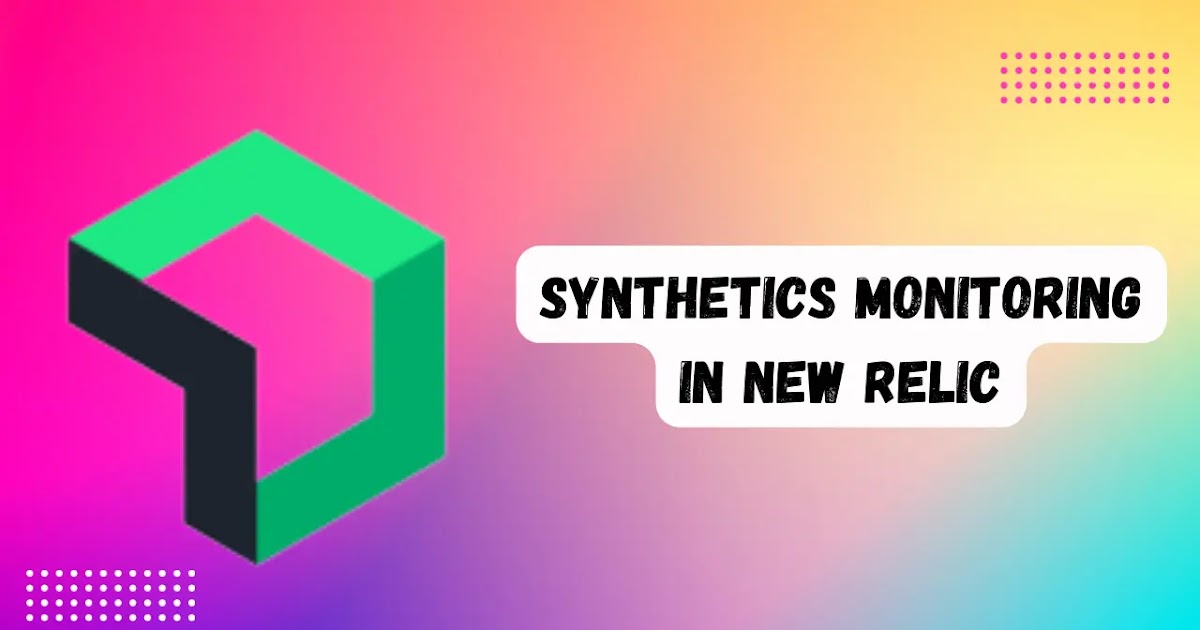Introduction
In today's fast-paced digital landscape, ensuring the seamless performance of web applications and services is critical. New Relic's Synthetics Monitoring offers a powerful solution to proactively detect issues, enhance user experience, and maintain the reliability of your digital assets. This comprehensive guide walks you through the process of setting up and effectively utilizing Synthetics Monitoring in New Relic, enabling you to achieve optimal performance and minimize downtime.
Understanding Synthetics Monitoring
Synthetics Monitoring in New Relic is a proactive monitoring solution designed to emulate user interactions with your web applications, APIs, and services. By simulating real user journeys, it allows you to identify performance bottlenecks, validate functionality, and ensure a smooth user experience. Synthetics Monitoring utilizes synthetic checks, scripts, and monitors to replicate user actions and provide valuable insights into your application's health.
Getting Started with Synthetics Monitoring
-
Create a New Synthetics Monitor: Begin by logging into your New Relic account and navigating to the Synthetics Monitoring section. Create a new monitor by selecting the desired type, such as Ping, Simple Browser, or Scripted Browser. Each type serves different monitoring purposes, so choose the one that aligns with your objectives.
-
Configure Monitor Settings: Provide essential information such as the monitor's name, location, frequency, and alert policies. Customize alert thresholds to receive notifications when performance deviations occur. Fine-tune the settings to match your application's critical requirements.
-
Develop Monitoring Scripts: For Simple Browser and Scripted Browser monitors, scripting is essential. Craft scripts that replicate user interactions, such as logging in, navigating through pages, and submitting forms. These scripts ensure the monitor simulates realistic user behavior.
Making Synthetics Monitoring Work for You
-
Performance Monitoring: Monitor your application's performance by configuring synthetic checks to run at regular intervals. Analyze response times, latency, and success rates to identify performance trends and potential issues.
-
Validation and Functionality Testing: Utilize Synthetics Monitoring to validate critical functionality and user paths within your application. Ensure that key transactions, such as sign-ups, purchases, or data retrieval, are functioning as expected.
-
Geographical Insights: New Relic's global network of monitoring locations enables you to assess how your application performs from various geographical regions. This helps identify latency and accessibility discrepancies across different user locations.
-
Alerting and Notifications: Set up alert policies that trigger notifications based on predefined thresholds. Receive alerts via email, SMS, or your preferred communication channel to take timely action when performance issues arise.
-
Custom Metrics and Dashboards: Integrate Synthetics Monitoring with New Relic Insights to create custom dashboards and visualize synthetic monitoring data alongside other performance metrics. This holistic view enhances your ability to identify correlations and trends.
Synthetics Monitoring FAQs
1. What is the purpose of Synthetics Monitoring? Synthetics Monitoring allows you to simulate user interactions with your web applications and services, proactively identifying performance issues, validating functionality, and ensuring a seamless user experience.
2. How do I create a Synthetics monitor in New Relic? To create a Synthetics monitor in New Relic, log into your account, navigate to the Synthetics Monitoring section, and select the monitor type you need (Ping, Simple Browser, or Scripted Browser). Configure the monitor settings and develop monitoring scripts as required.
3. What types of monitors are available in Synthetics Monitoring? New Relic offers several types of monitors, including Ping monitors that check the availability of a URL, Simple Browser monitors that navigate through web pages, and Scripted Browser monitors that replicate complex user interactions.
4. Can Synthetics Monitoring be used for performance optimization? Yes, Synthetics Monitoring is a valuable tool for performance optimization. By monitoring response times, latency, and success rates, you can identify performance bottlenecks and proactively address them to enhance the user experience.
5. How does Synthetics Monitoring provide geographical insights? Synthetics Monitoring utilizes a global network of monitoring locations. This allows you to assess your application's performance from various geographical regions, helping you identify latency and accessibility issues based on user locations.
6. Can I integrate Synthetics Monitoring data with other metrics? Yes, you can integrate Synthetics Monitoring data with New Relic Insights. This enables you to create custom dashboards and visualize synthetic monitoring data alongside other performance metrics, providing a comprehensive view of your application's health.
Conclusion
Incorporating Synthetics Monitoring into your digital strategy empowers you to detect and address performance issues before they impact user experience. By leveraging synthetic checks, scripts, and monitors, you can gain valuable insights into your application's health, validate functionality, and maintain optimal performance levels. As you explore the capabilities of Synthetics Monitoring in New Relic, you'll enhance your ability to deliver seamless digital experiences and achieve the highest standards of reliability in today's dynamic digital landscape.


No comments yet